
Jul 11, 2018 | Baseball, Guest Posts, Partners
If you can’t explain it ‘simply’ then you don’t understand it well enough. – Albert Einstein
This statement holds true in the world of hitting, more today than ever. New ways to measure virtually every aspect of the art of hitting a round ball with a round bat, squarely, yet it seems more confusing than ever. There are certain things however, that will never change, which is the intent of this series of articles. We’ll cut through the confusion to get to the essence of what all the data is actually telling us. Data, after all, is simply the measurements of what happened. Data doesn’t tell us ‘How’ it happened, only ‘That’ it happened. The rest is up to interpretation.
Launch Angle is a great place to start. Ball flight is crucial to truly getting the most out of your swing. Batting Averages are typically well over .600 on line drives, around .240 on grounballs and just over .200 for flyballs, so the trajectory off your bat is sort of a big deal. Analysts speak of Launch Angle as though it’s a verb, like we can turn it on and off or simply “just say no to groundballs”, yet this is a long way from the truth. Hitters can’t really control how the ball comes off the bat. Hitting a round ball with a round bat, only has 3 possible outcomes.
- Near Perfect Contact (20%) – the ball is hit exactly on the same line as the pitch
- Below Center Contact (40%) – the ball is hit below center resulting in some type of flyball
- Above Center Contact (40%) – the ball is hit above center resulting in some type of groundball
Perfect contact is where the sweet spot of the bat hits the ball exactly in the center, sending the ball back in the exact line it came in on . This almost never happens. Most hitters hit the ball at their absolute maximum Exit Velocity less than 5 times in 500 plus at bats. In most cases, like Avisail Garcia one year, hit the highest Exit Velocity that year at 126 MPH. He hit only one other ball that year at 115 MPH or more (only about 91% of his max) and averaged less than 80% of his 126 MPH ‘best bolt’. Top MLB hitters hover around 20-25% Line Drives, with the average about 20%, although only about 1-2% are actually hit perfectly, the rest are all miss hits.
Below Center contact is when the bat is underneath the center of the ball, causing anywhere from a high line drive to a pop up in the infield (when fair) and this miss hit happens roughly 40% of the time.
Above Center contact is when the bat is above the center of the ball, causing a low line drive to a topped dribbler or something in between. This also happens about 40% of the time, despite baseball trying to “just say no to grounballs”. MLB with their efforts to hit the ball in the air, has only managed to change the average from 48% groundballs to 45%. A great improvement, but yet still a very long ways away from 0 groundballs, which is virtually impossible.
The indisputable fact is that round/round collisions have a set of laws that will produce contact at about 40% flyballs, 40% groundballs and about 20% line drives. That 40/40/20 breakdown will always be the standard. The question is what does that mean?
Hitters can’t control Launch Angle, only the things that cause it. In short, creating a Bat Path that matches the Pitch Path is the bottom line. When the bat is in line with the pitch, the hitter has the best chance to produce the most solid contact. When hitters “just swing up” , “swing down on the ball”, or any other swing path choice, they alter the natural ball flight laws.
Just Say No to Groundballs
Warning, this idea gets a bit technical but we will return to simple afterwards. Also, this is not in any way critical of Josh Donaldson, he is truly one of the elite, it is just a great example of how hard controlling Launch Angle is.
In 3 years of fastballs in the center of the zone:
- Josh was thrown 394 fastballs in the middle box of the strike zone.
- He swung at 317 of them with the intent of hitting them all at 25 degrees
- 37% Groundballs – no one can “just say no to groundballs”
- 6% Barrels or balls hit in a Launch Angle range of 25 to 30 degrees at 100 MPH
- His average Exit Velocity was 99 MPH
- Batting Average just north of .400
- 36% of those middle pitches were fouled off
- Swing and Miss rate was just over 11%.
These stats are impressive, but to really understand Launch Angle, you must get precise because perfect contact requires perfect timing in a perfect line and it is quite rare. We must have a single point to measure all contact from if we are to be exact. Only 1 degree line is exact for this middle pitch (assuming they are on the same pitch line which they will not be but will be close), every other one is slightly miss hit. Within a range of 10 degree misses, above or below the exact center, the Exit Velocity will remain close to maximum. 20 degree miss hits start to lose Exit Velocity, a discovery made in the mid 1990’s with my early Exit Velocity testing off the tee.
For the full article on Hacking the Swing: The Cheat Codes of Launch Angle, click here.
Perry Husband is an author, former player, consultant, speaker and one of the nation’s most respected baseball authorities. Husband patented the science of Effective Velocity which has been used by MLB and university coaches, pitchers and hitters in both baseball and softball. He has worked with countless NCAA champions and has been credited for helping the Astros win the National League Championship in 2005.
More information can be found at hittingisaguess.com.
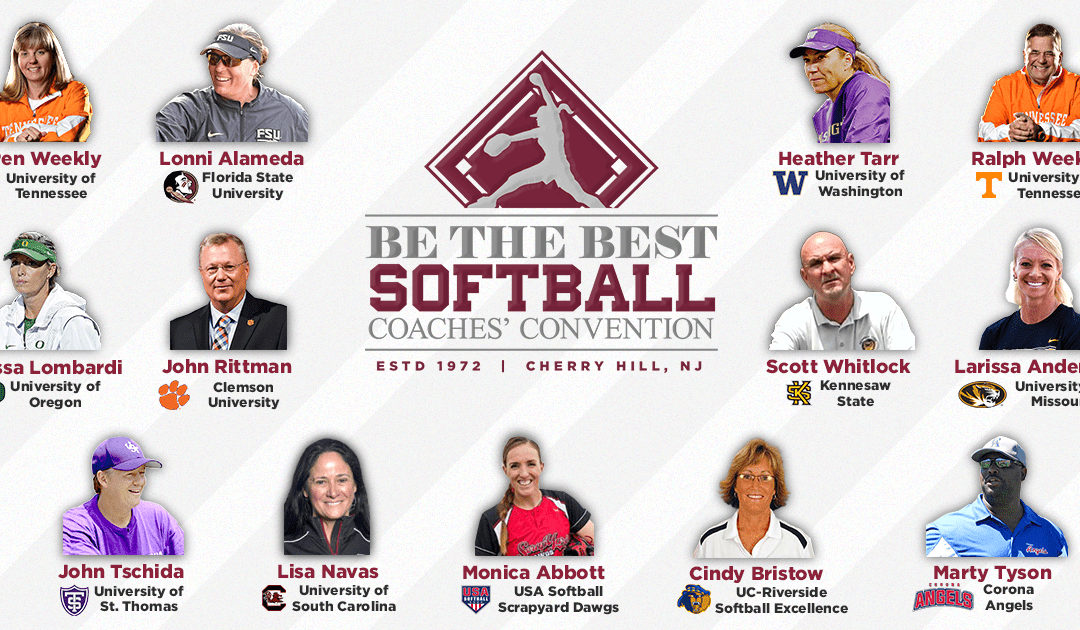
Jul 2, 2018 | Other, Softball
If you want to be the best, you want to learn from the best.
This year, Be the Best brings you the best of the best in an unparalleled roster of softball speakers who hail from all fields of the game.
On deck is Lonni Alameda, Head Coach at Florida State, who comes bearing the school’s first-ever NCAA Championship crown and Heather Tarr of Washington who battled Alameda in the WCWS. John Rittman, who is developing Clemson’s first-ever softball program and Missy Lombardi who has recently been named Head Coach at Oregon after helping lead Oklahoma to more titles than there’s room to mention. There’s USA Softball professional player, Monica Abbott and Division III’s master of the game, John Tschida. Scott Whitlock, former head coach at Kennesaw State, wields his wit and wisdom, Larissa Anderson shares her journey from Hofstra to Mizzou and Lisa Navas of South Carolina brings two decades of coaching success to the plate. The inimitable Marty Tyson of the Corona Angels tells it like it is and everyone’s favorite husband and wife co-coaching team, Karen and Ralph Weekly round out the line-up..
Be the Best, founded by coaches for coaches, is the longest running convention of its kind in the country. The speakers’ accolades run deep and their passion deeper. They interweave their stories and skills in a way that hits home, leaving everyone in attendance with something that will help them become a better coach.
Don’t miss the best line-up ever!
Be the Best Softball Coaches’ Convention
Thursday, January 17 – Saturday, January 19
Crowne Plaza Cherry Hill
2349 W. Marlton Pike, Cherry Hill, NJ 08002
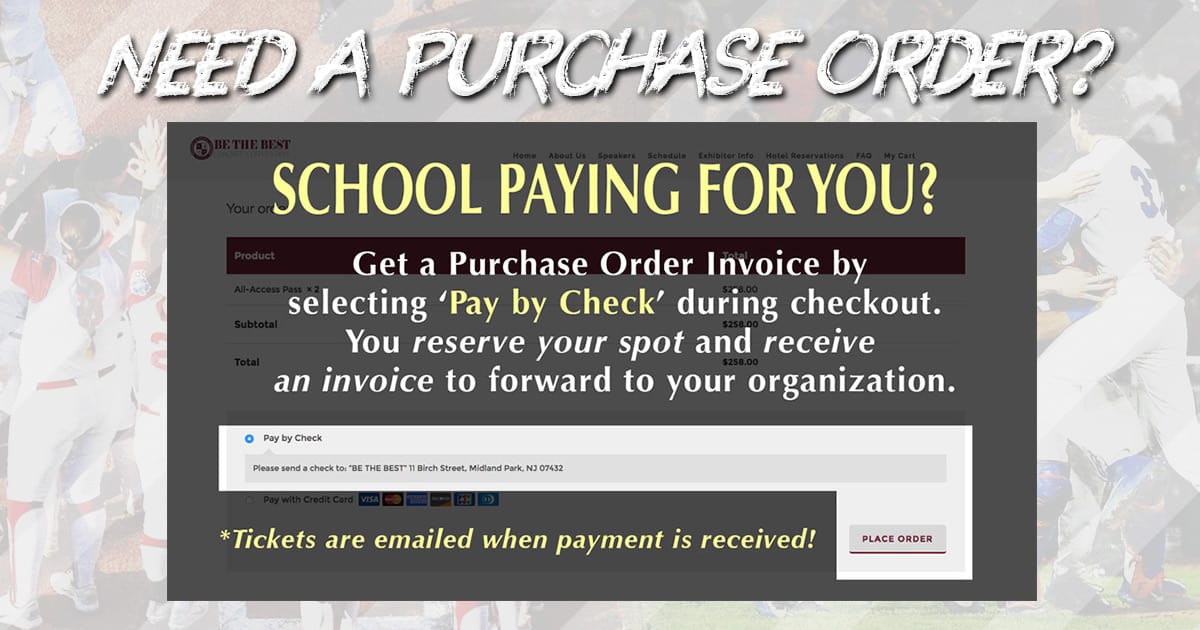
Jun 23, 2018 | Baseball, Softball
Is someone footing the bill for you?
One of the best things about Be the Best is that it’s so well-known and highly-regarded that employers, schools and organizations will often pay for you to attend this action-packed coaches’ convention.
And we, at Be the Best, have always vowed to keep the process as simple as possible for you.
If someone else is footing your bill, all you need to do is select PAY BY CHECK during check out. A Purchase Order Invoice will be generated and e-mailed to you immediately. You can then print it out and submit it to your organization for payment.
FROM NOW UNTIL JUNE 30, 2018
$99
JULY 1 – AUGUST 31, 2018
$119
SEPTEMBER 1 – OCTOBER 31, 2018
$129
NOVEMBER 1 – FIRST DAY OF CONVENTION
$139
PRICE AT DOOR
$159
Talk to your employer TODAY to secure your spot at everybody’s favorite baseball and softball coaches’ convention!
Be the Best Baseball Coaches’ Convention
Thursday, January 10 – Saturday, January 12, 2019
Be the Best Softball Coaches’ Convention
Thursday, January 17 – Saturday, January 19, 2019

Crowne Plaza – 2349 W. Marlton Pike Cherry Hill, NJ
The hard-hitting coaches’ convention that adds FUN to the lineup.
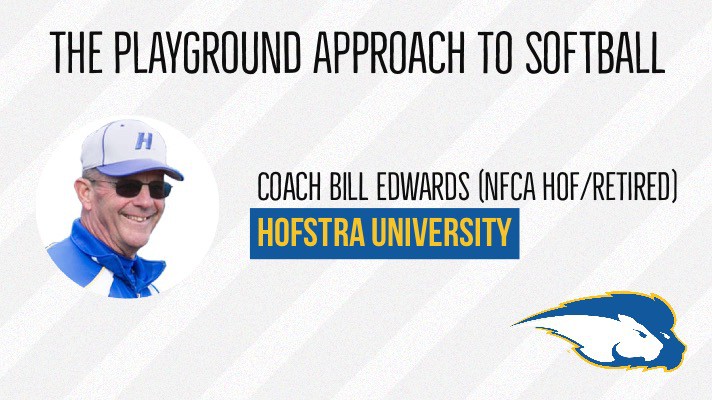
Jun 18, 2018 | Guest Posts, Softball
There was a time when the local playground helped shape a generation.
There was a freedom to those times, since we could leave our houses on a sunny summer day and meet at the playground for a day-long “game.” There was no adult supervision and the primary goal for some of us was to just get in the game. The older kids owned the field, and they chose the teams. And you had to pay your dues until you grew up to be an older kid, and then you “owned” the field. There was a right of passage.
Today’s generation of softball players doesn’t have those memories. As long as they can remember, they’ve been going to organized practices where adults coordinated every move. Sure, they learned some skills, but did they really learn how to PLAY the game, how to LOVE the game, how to JUST WANT TO BE IN THE GAME?
As part of my coaching philosophy, I’ve tried to give my players a taste of those days and the lifelong lessons learned from the experience. I’ve developed a whole defensive system and philosophy that I call “The Playground Approach.” It teaches what softball used to be, and what it still should be today.
The players must learn to play freely, relaxed, and most importantly, how to figure things out for themselves. There are certain things in our game that cannot be orchestrated, and we have to teach our players the lessons that the playground taught us. We also have to teach them why we play this game.
Winning then becomes the bi-product of all those lifelong lessons that we’re trying to teach. Everything that happens in a game, happens in life. You’re going to face adversity, deal with failure, all of the intangibles that we should be teaching the player at a very early age. So, before we discuss how to implement this philosophy, let’s look at what the playground has taught us.
- Right of Passage. The older kids ruled the field.
- How To Choose Up Sides. I distinctly remember sitting on the fence in the fifth grade, and the 7th and 8th graders were picking the teams. All I wanted to do was get in the game. I was hoping they would choose me. I’m the youngest kid there and I’m the last one picked. I came flying off the fence, yelling “I’m in the game, I’m in the game.” My self-esteem was so high, because it wasn’t about being the last one picked; it was about being in the game.
- How To Umpire a Game. There were no adults around, so we had to figure out how to umpire. We had to decide whether the person was safe or out. We made the decisions.
- How To Make a Batting Order. We had to make our own batting order, but it wasn’t difficult. Everyone on the playground knew who was good, and there were no parents telling us their kids were the best. Nobody was trying to sell anything to anybody, because we knew who was good, and we tried to emulate and be like them. So you may be batting ninth and playing right field, or you were hitting third and playing shortstop. No one argued, because it was known. Sometimes kids can evaluate themselves better than the coaches can.
- How To Settle Disputes. Again, we had to settle disputes because the oldest and biggest kids ruled, and they were in charge. Right of passage.
- How To Create a New Game when Kids Went Home. We became very creative because when kids went home, we had to change the game to make it fair. Sometimes we self-hit, hit only to one field or created other games. We made up our own rules because we still wanted to play.
- How Much Fun We Had Because There Were No Adults Telling Us What To Do. We figured things out for ourselves. We became leaders. This is what created leaders of that generation.
- SOMETIMES WE WOULD EVEN WONDER WHO WON THE GAME—AND SOMETIMES IT WAS THE MOST COMPETITIVE ENVIRONMENT EVER CREATED. Sometimes we would play all day long and not even know or care who won the game. At other times, depending on the environment, it was the most competitive situation ever created. You learned how to be a competitor because you didn’t want to let your teammates down. You knew that if you wanted to get in the next game, you better play well, be your best.
On the playground, you just played. And, we learned that there’s no one fly ball or ground ball that’s any more important than the one you are about to play. If it’s a big rivalry game, a conference championship game, or a national championship game, the playground teaches us that it’s just another game. They are going to hit ground balls at us, and players just have to field, hit, catch, throw and run the bases, just like in any other game.
In our system of competitiveness, we cannot lose sight of how hard the players have worked to get to where they are. They lift weights, do all this running, and give up so much socially to be a part of a team. As coaches, we have to remind them that they are not entitled to play but they deserve this privilege because of the hard work they’ve put into it. They must remember how hard they’ve worked, so that when they get into the game, they live every moment, giving the game their best effort all the time.
I taught physical education in the New York school system for many years. The students used to call me “coach,” which was a great compliment. I wasn’t just a teacher, I was a coach. Today, I’d rather be called “teacher,” because every banker, lawyer and Indian chiefs who’s “coaching” his or her daughter’s team is called coach, whether they deserve the name or not.
On Long Island, back in the day, there were two summer teams; today, there’s 50. Everyone is playing, which is great for the sport, but are the majority of players being “coached” or “monitored”? In some cases, it’s almost better if the kids were playing on their own and learning from each other than from a parent who doesn’t really know how to coach.
Which leads me back to the teacher part. Good coaches should be teachers first, and we should be able to teach every aspect of the game. Coaches need to be responsible for continually educating themselves and staying up to date with the latest coaching techniques. Afterall, we send public school teachers to get retrained and college professors go to seminars to learn the latest developments on their subject matter. Do we as coaches continually try to grow with the game, or do we feel “monitoring” is sufficient?
The playground taught us many things, and today’s coaches need to capture that playground mentality in their practices. The foundation for this freedom MUST be the teaching of individual techniques.
Coaches need to learn the correct techniques, especially when it comes to fundamentals. Within our system, we teach the fundamentals everyday. (See Hofstra Softball Fundamentals Everyday Drills). These are fundamentals that are common to every position — catch, throw, footwork — and we practice them everyday for 20 minutes. There are 42 things that we do everyday to make sure we are fundamentally sound.
Bill Edwards served as Hofstra University’s head softball coach from 1990 to 2014. His career spanned 1,350 games and led Hofstra to over a dozen NCAA tournament appearances. Edwards’ success as a coach was honored with a 2009 enshrinement in the NFCA Hall of Fame.

May 29, 2018 | Guest Posts, Softball
MYTHS
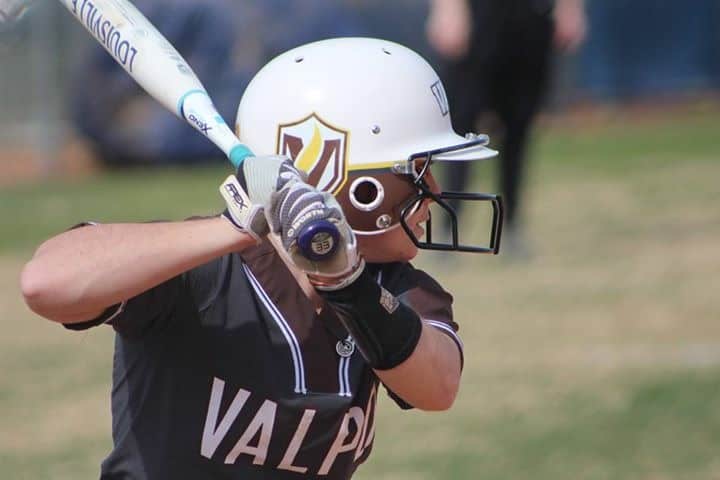 IF YOU DON’T PLAY DIVISION I, YOU HAVEN’T REALLY REACHED YOUR GOAL
IF YOU DON’T PLAY DIVISION I, YOU HAVEN’T REALLY REACHED YOUR GOAL
No. Stop.
I am a Division I softball coach. It doesn’t mean I’m a better coach than my colleagues in Division II. It doesn’t mean that my wins and losses are more relevant than theirs, or that I’m higher on my climb up the ladder than them. Division II isn’t the JV version of Division I. It doesn’t work that way. And you haven’t come up short on your goal if you play ball at a school that competes in something other than NCAA Division I. Really. No matter where you play, you join a team that spends all year sweating and grinding together. Laughing together. Picking each other up and pushing each other further. Becoming a family. And when you win a championship and dogpile on home plate with that family…it doesn’t matter what Division you are. Winning is winning, and family is family, no matter what the Division.
IF YOU HAVEN’T COMMITTED BY JUNIOR YEAR, YOU’RE OUT OF LUCK
No.
Even the biggest Division I softball programs may have money available into your junior or senior year. As y’all are well-aware, players are committing at younger and younger ages. So, yes, it feels like you’re way behind when you see kids not yet in high school committed to a college. But those early commitments have created a trickle-down effect that make uncommitted juniors and seniors more desirable: There are plenty of kids who commit early and whose priorities change as they grow up, and the result is they decommit later into their high school career, leaving a hole in that particular college’s recruiting class, and opening up new opportunities for uncommitted athletes.
But on top of that, even without decommitments, many schools at all divisions still have money for juniors. We recognize the importance of watching someone grow in maturity, skill and strength before offering them a spot on our team. So if you’re currently a 2020 and you haven’t committed yet…take a deep breath. There are many opportunities still out there.
IF YOU DON’T THROW 60 MPH, YOU CANNOT PITCH AT THE DIVISION I LEVEL
No.
We face plenty of successful pitchers throughout our season that do not throw 60 MPH. Some pitching coaches or programs may want their pitchers to throw over a certain velocity. If that velocity is 60 MPH and you don’t throw that hard…well, then that’s not the program for you. But there are many Division I softball programs who have pitchers throwing under 60 MPH and finding a good deal of success. You don’t have to throw 60 MPH to play Division I softball.
YOU’RE TOO SMALL TO PLAY DIVISION I
No.
Have you heard of the University of Alabama? You may have seen them at the World Series. A few years ago they had an incredible third baseman named Kelley Montalvo who I’m not sure topped out at five feet tall. And that was at one of the best softball programs in the country! At the mid-major level, we see a lot of undersized players doing oversized things on the field. Some programs may want their players to be a certain size. If that size is bigger than you…well, then that’s not the program for you. But there are many Division I softball programs who have players considered small. You can be small in stature and play Division I softball.
TRUTHS
 WE HAVE STOP WATCHES & RADAR GUNS
WE HAVE STOP WATCHES & RADAR GUNS
Be honest about your pop time, your home-to-first time, and your pitching velocity. We have stopwatches and we have radar guns, and we pull them out all the time to make sure we have an accurate read on your abilities.
EXAGGERATING YOUR POP TIME IS DIFFERENT THAN EXAGGERATING YOUR GPA
Speaking of honesty; we get a lot of emails with inaccurate pop times or home to first times. I’m not a fan of that, but I understand it. If ever you threw a 1.68 even though you typically throw about a 1.8, I understand you putting down your best ever time. And when we come see you play, like I said above, we’ll get our own read on that.
However, you cannot exaggerate your GPA. You cannot put your most recent semester’s GPA on your profile sheet and misrepresent it as your cumulative GPA. We need your real, cumulative GPA. This information is imperative for us to assess your ability to get into the school and, once here, to be successful academically. If you have a 2.8, you can’t round up; it doesn’t work that way.
COLLEGE COACHES TALK TO OTHER COLLEGE COACHES
We share information about you guys with each other. This happens a lot. If, for instance, a colleague of mine is looking for a 2020 catcher and I’m not, I’ll share info with them on players I know who might fit the bill. If we are at the same tournament, I’ll text that coach if I see a good catcher on the field I’m watching. I’ll send video. I might even ask the team’s recruiting coordinator about them. Yes, we are rivals on the field and we don’t share all the secrets to our trade…but college coaches are also a cooperative group. Recruiting is expansive and not only are we good at helping each other, but when one of you makes a great impression on us but we just don’t have the spot, we’re also good at trying to help you by passing your name along to each other.
 SKILL & CHARACTER
SKILL & CHARACTER
I’ll take character over skill every day. I was given a really good piece of advice about recruiting “questionable” players that I will share with you. I was told that if I found an incredible athlete with questionable character, I could do one of two things: If I passed on them, they’d go to a rival school and might help beat my team once or twice a year. But if I brought them on with that questionable character, then that person could beat us every day for four years. Our culture is the backbone of our decision-making process, and because of that we care just as much about how you treat your teammates as how hard you can hit a ball.
With that said, here are some things we do to evaluate your character. We watch you in the dugout. We watch to see how you head out to your position. We watch to see how you react to your own successes and failures, and those of your teammates. We hear your conversations with teammates while we walk behind you heading to our next field. We see what you post on Twitter and what you retweet. We pay attention to how you interact with your coaches and your parents, because we’ll be spending four years with you. We have a program to grow. We have 18-20 players who are counting on us to bring in people who fit into our family and who contribute positively both on and off the field. And we take that responsibility seriously.
So there you have it. A couple myths and a couple truths about the recruiting process. The best advice I can give is to be honest with yourself about your abilities and about what constitutes a fit for you as it pertains to your softball & academic careers and to your overall well-being. And, lastly, I encourage you to focus on the pleasure of playing ball. I can’t imagine the pressure you must feel in the recruiting landscape today, and I hope that you don’t let the college coaches behind the fences eclipse the joy of the competition and camaraderie you have between the lines. Best of luck!
This article written by Valparaiso University’s Head Softball Coach, Kate Stake was previously published in Top Recruit Magazine.
Kate Stake has been Head Softball Coach at Valparaiso University since 2014. She led the team to the Horizon League Championship as well as a to a berth in the NCAA Tournament in her second year at the helm. Prior to arriving at Valpo, Stake spent two seasons on the coaching staff working under NFCA Hall of Fame head coach Bill Edwards, three seasons as assistant coach at the United States Military Academy and three years at Eastern Illinois. Stake earned a bachelor’s degree in English Education from Illinois State and a master’s in kinesiology and sports studies from Eastern Illinois.
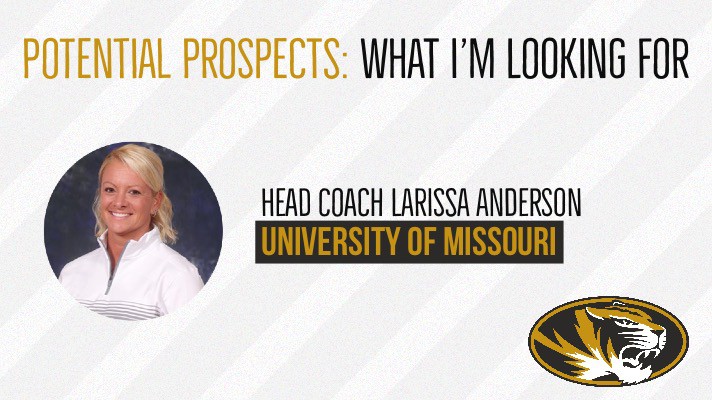
May 24, 2018 | Guest Posts, Softball
What I’m looking for in Potential Prospects
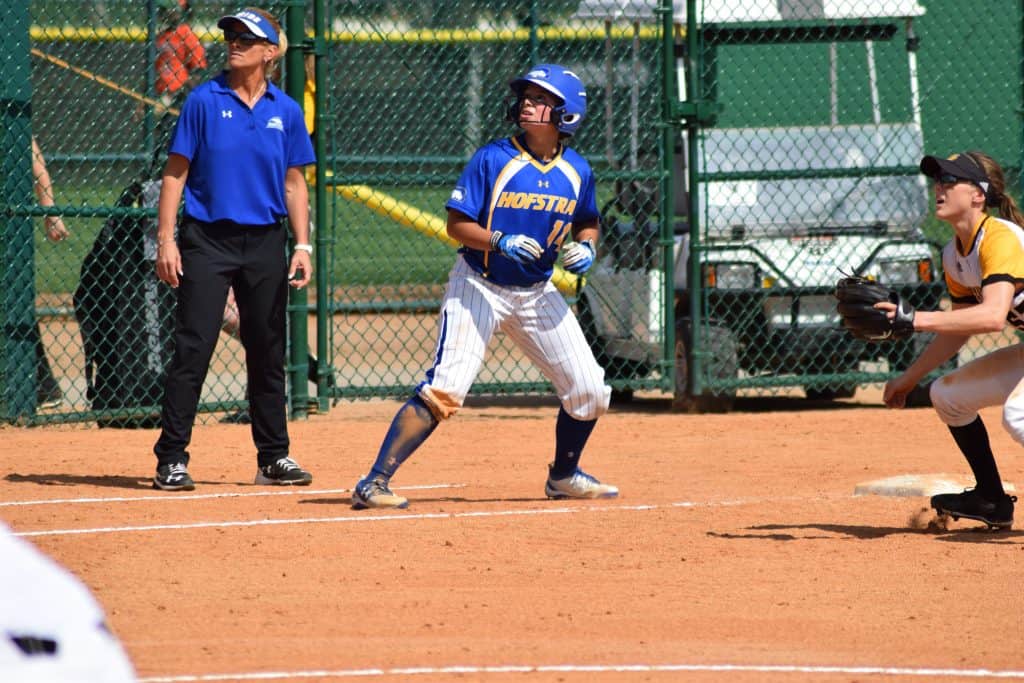 #1 – Fierce Competitor, Self-Motivated, Self-Disciplined! I want to see someone compete on and off the field, in the batter’s box and in the class room. Someone who works hard on every play, dives, supports their teammates, carries their own bag, takes challenging courses in high school and wants to win.
#1 – Fierce Competitor, Self-Motivated, Self-Disciplined! I want to see someone compete on and off the field, in the batter’s box and in the class room. Someone who works hard on every play, dives, supports their teammates, carries their own bag, takes challenging courses in high school and wants to win.
 #2 – Upside Potential. When you can teach every aspect of the game, you look at a future prospect and evaluate them and say, “how can I make this player better? Will she be just as good if not better than what I currently have on the team?” If the prospect has one of the 5 tools that is at the Division 1 level, (1-Running Speed, 2-Arm Strength, 3-Hit for Average, 4-Hit for Power, 5-Fielding), what is the potential of the other tools? If she has more than one of the five tools, then you must develop the other tools. If she has all five tools at the Division 1 level, then she’s a blue chip prospect.
#2 – Upside Potential. When you can teach every aspect of the game, you look at a future prospect and evaluate them and say, “how can I make this player better? Will she be just as good if not better than what I currently have on the team?” If the prospect has one of the 5 tools that is at the Division 1 level, (1-Running Speed, 2-Arm Strength, 3-Hit for Average, 4-Hit for Power, 5-Fielding), what is the potential of the other tools? If she has more than one of the five tools, then you must develop the other tools. If she has all five tools at the Division 1 level, then she’s a blue chip prospect.
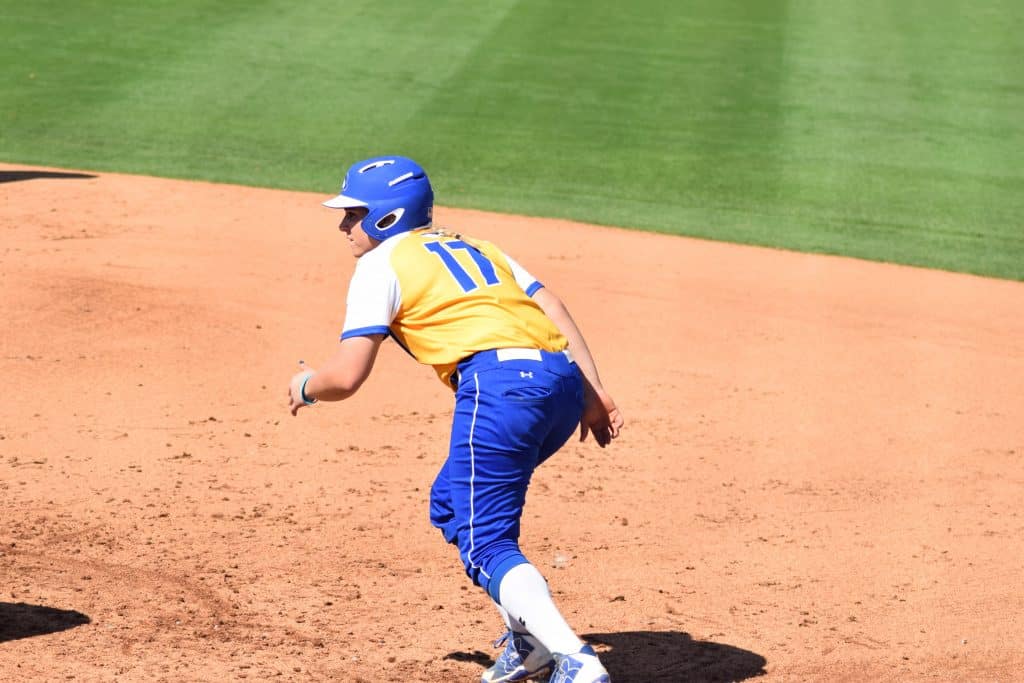 #3 – I want a prospect to want to play for me and want to play for my university. I don’t want to have to sell a kid to come to my school. I want her to recruit me as much as I want to recruit her. Then I know she wants to be a part of our family and is making a decision for the right reasons. Not because someone else is telling her to, not because of the scholarship offer, not because of the conference. Because she wants this to be her home for the next four years and to be a part of our family for the rest of her life.
#3 – I want a prospect to want to play for me and want to play for my university. I don’t want to have to sell a kid to come to my school. I want her to recruit me as much as I want to recruit her. Then I know she wants to be a part of our family and is making a decision for the right reasons. Not because someone else is telling her to, not because of the scholarship offer, not because of the conference. Because she wants this to be her home for the next four years and to be a part of our family for the rest of her life.
Larissa Anderson was named Head Softball Coach at University of Missouri after the 2018 season, having been Hofstra University’s Head Softball Coach since 2015. Before taking over at Hofstra, Anderson spent the previous 13 seasons on the university’s staff as an assistant; the last 10 as the associate head coach. She was just the sixth head coach in program history since 1980 and took over for Hall-of-Fame coach Bill Edwards, who helmed the program from 1990 through 2014.
Anderson led Hofstra to the Colonial Athletic Association championship and a NCAA Tournament berth in her first season as the program’s head coach in 2015, guiding Hofstra to a 38-14-1 record and a spot in the NCAA Gainesville Regional. She and her assistants were named the NFCA Northeast Region’s Coaching Staff of the Year. As a nationally-recognized coach, Anderson frequently speaks at camps and clinics across the country.

May 23, 2018 | Softball
The all-new American Softball Association (ASBA) has opened up the playing field with the introduction of the hottest new league in women’s sports, offering an exciting alternative for professional softball.
“Traditionally, the end of college has meant the end of the road for many elite softball players,” said Michael Chiaradio, CEO and founder of ASBA. “Opportunities to play professionally have been largely limited and the odds high. ASBA has tapped into that void.”
The inaugural season of the league will include four teams that will compete in Mobile, Alabama from June 15 through July 31, 2018.
“I am beyond blown away by the number and caliber of athletes who have registered with ASBA. We have former professionals, All-Americans, Division I superstars and college standouts. These young women wanted to keep playing at a high level and were looking for a different sort of league. ASBA came along at the right time.”
ASBA was built on a revenue-sharing model that guarantees an equal distribution between teams/players and the league. Salaries will be paid from all Softball Related Income (SRI) which includes, but is not limited to ticket sales, proceeds from the ASBA Network, concessions, parking, local sponsorship agreements and merchandise sales.
“We look at this as a cooperative venture. We split all monies 50/50 with the teams, reinvesting our portion into growing and developing the league. We look forward to forming lasting relationships with local merchants and businesses,” Chiaradio said.
To keep costs down and increase SRI, the league is looking for community support in the housing of players, a practice common in minor and independent baseball leagues. Sponsorships and donations have helped to launch the league.
“It was a long shot,” Chiaradio, a former professional baseball player admits. “But it’s all coming together, thanks to the round-the-clock efforts of our team and to the players who put their faith in a start-up league. I’m sure there will be bumps in the road, but first and foremost, ASBA is a cooperative league. We don’t believe in holding back, hiding information or pretending to be perfect. We listen to our players and our fans and together we will create the best professional softball league ever! It’s been a long time coming, but we’re ready to play ball!”
ASBA will hold its inaugural draft on Wednesday, June 6, 2018.
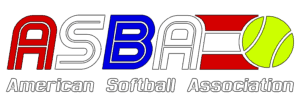

May 17, 2018 | Baseball, Guest Posts, Partners
2017 was most definitely the ‘year of the homerun’. All the experts, the same ones calling for changes in the rules to help the feeble offense of just a couple of years ago, got their wish of more offense. The 2017 HR tally shattered every other year, topping over 6,000. This postseason was no different, with 104 homeruns hit, when it was all said and done. MLB hitters averaged 1.26 HRs per game this past season, setting all kinds of records and yet, the postseason yielded more than double that pace with 2.7 HRs per game. The question is ‘why’ have the homer totals skyrocketed? Is it that the balls/bats/players are juiced? Is it a different mental approach at the plate? Is it different swing mechanics, such as the ‘Launch Angle’ craze? Are hitters ‘getting their foot down earlier’? Are pitchers, even though they are throwing harder than ever, efficient? The truth, as usual in real life, is not so simple that we can answer it with any ‘one’ thing. This is a mechanic’s world, meaning if ‘this’ is wrong then ‘that’ is the fix and the baseball world thinks very much this way.
The question is ‘why’ have the homer totals skyrocketed? Is it that the balls/bats/players are juiced? Is it a different mental approach at the plate? Is it different swing mechanics, such as the ‘Launch Angle’ craze? Are hitters ‘getting their foot down earlier’? Are pitchers, even though they are throwing harder than ever, efficient? The truth, as usual in real life, is not so simple that we can answer it with any ‘one’ thing. This is a mechanic’s world, meaning if ‘this’ is wrong then ‘that’ is the fix and the baseball world thinks very much this way.
The baseball world wants to be able to pinpoint the exact reason for the power surge on one facet. The truth is, while the answer is simple, it is not singular. There is not one thing that has changed to cause this phenomenon. The essay on Ev that Carlos did on this subject laid out exactly the ways that hard hit balls are happening.
- Timing – pitchers are throwing pitches close in Ev speed, making it easier to time them
- Predictable – pitchers are throwing the most predictable pitch at the most predictable area and at the most predictable speed – Fastball down and away
- No Deception – focusing on down and away fastballs, they can’t hide the identity of off speed pitches and so 20% of the hard contact happens with no Ev Tunnel
- Earned – when pitchers use Ev Tunnels and have at least 6 EvMPH between pitches, their pitches are harder to identify and time up
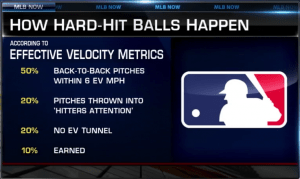
I have written on the ‘Perfect Storm’ that is happening right now, making the homerun flourish, but this will end sometime soon. When the clues are minimized and deception is at max levels, hitting is going to get very difficult.
I did a very detailed study of this post season, with an especially close look at the World Series. You may have seen some of the results of this study on the latest segment of Carlos’ Tunnel Vision on MLB Now recently. Carlos Pena did an expose on one of the key reasons for the crazy surge in power this postseason. In the debut of Tunnel Vision, Carlos reported the ‘Ev Predictions’ for hard hit balls of the postseason, using the Ev Microscope.
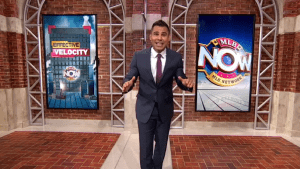 The Ev prediction was 50/20/20/10 or 50% within 6 EvMPH of the previous pitch, 20% in the Hitter’s Attention zone, 20% with no Ev Tunnel or low deception and only 10% in the ‘earned’ category or Ev efficient sequences. The prediction was eerily accurate, with the totals actually being 52/20/16/12……………
The Ev prediction was 50/20/20/10 or 50% within 6 EvMPH of the previous pitch, 20% in the Hitter’s Attention zone, 20% with no Ev Tunnel or low deception and only 10% in the ‘earned’ category or Ev efficient sequences. The prediction was eerily accurate, with the totals actually being 52/20/16/12…………… 
Above is Hits & HRs in the World Series, just a very small percentage away from being EXACTLY on the money. The Ev Microscope never misses by more than a few percentage points because timing is the reason for all hard contact and Ev is the metric for timing.
Below – 2017 Postseason homeruns, 104 total. Again, the prediction was almost exactly on the money. How is this possible? The Ev Microscope sees the issue through the lens of ‘Timing’. In other words, when hitters are forced to time pitches on their own, without the inefficient Ev sequences or ‘Gifts’, their hard contact is kept at around 10%. This means that 90% of all hard contact is ‘At Risk’. If I told you that 90% of all running plays in football, based on a new scientific discovery, are inefficient. If ‘ALL’ offenses in football could possibly improve by at least 20% overnight, what do you think would happen? What would that be worth?
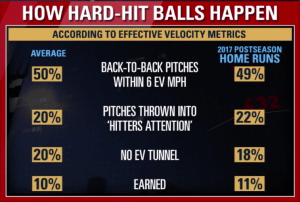
- All 9 elimination games were decided on an Ev inefficient sequence
- 33 of the 38 games were decided on an Ev inefficient sequence
Effective Velocity was the single most important factor for teams going home or moving on in the Postseason. 90% of all hard contact could be eliminated, or at least minimized dramatically by maximizing Ev efficiency. Of course, not all 90% of Ev inefficient pitch sequences that result in hard contact will result in outs but you can rest assured, when the timing gifts go away, so will a huge % of hard hit balls. This postseason showed this perfectly. The same exact pitcher/hitter confrontations resulting in devastating homeruns, also resulted in weak to no contact.
George Springer, World Series MVP, went from awful to awesome in one at bat. How is that possible? Ev Efficient Pitch Sequences is one of the major factors in the answer. Not taking anything away from Springer but the HR that sparked his performance in Game 2 of the World Series was an At Risk pitch, back to back 86 EvMPH pitches in the same area. He went off after that and all but 10% of his hard contact, were gifts of this type. 50% of his hard contact was on pitches within 6 EvMPH of the previous pitch and 40% were either in the Hitter’s Attention or easier to identify, due to no Ev Tunnel. This means only 1 in 10 of his hard hit balls were on pitch sequences that were the hardest to time. This was almost exactly the same as all hitters in the postseason, only 12% of hard contact came on the hardest to time sequences.
It is very safe to say that hard contact is all about timing. Hitting is all about timing and this postseason was all about pitchers bending over backwards to help that timing. The hitters still have to execute and they did that beautifully. Their game plans were perfectly matched to many of the pitchers approach. Kershaw has some key weaknesses in his approach that match perfectly with the Astros’ lineup. Kershaw’s Ev mistakes fall into the rhythm of the opponents’ hitters almost perfectly.
What happens when pitchers wake up from the analytics haze that they are in? Hitting will get very difficult for a time. Hitters that are taught to ‘swing up’ or to ‘Launch Angle’ as though it is a verb, will have a very rude awakening. Time Training, the hitting side of Ev, is geared to help hitters understand what is happening and learn to be on time ‘On Purpose’ rather than by accident, as is happening right now. Any method of hitting can work now but that will come to an end when pitchers understand how to max out their pitching approaches.
Perry Husband is an author, former player, consultant, speaker and one of the nation’s most respected baseball authorities. Husband patented the science of Effective Velocity which has been used by MLB and university coaches, pitchers and hitters in both baseball and softball. He has worked with countless NCAA champions and has been credited for helping the Astros win the National League Championship in 2005.
Effective Velocity (EV) is the study of pitch speed and how location changes the reaction time by forcing the hitter to hit the ball at a contact point that is different from what they were ready for.
More information can be found at hittingisaguess.com.
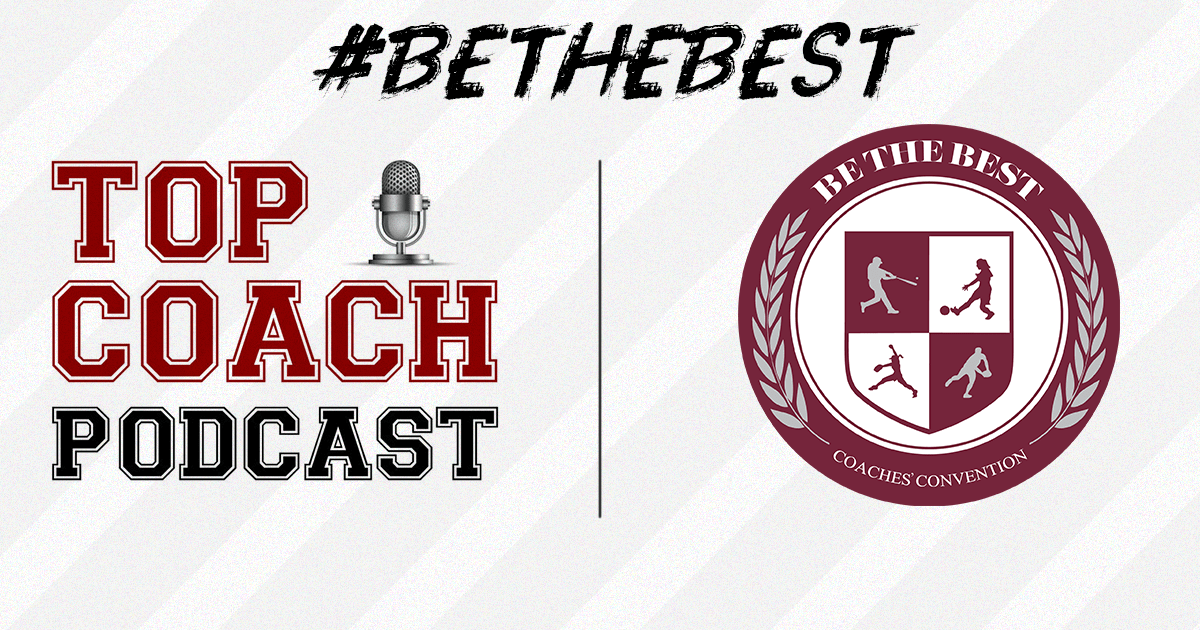
Jan 15, 2018 | Baseball, Partners
We at Be the Best are really excited to announce our newest partner, Top Coach Podcast.
For many of you, Top Coach needs no introduction. As the single greatest home to podcasts for and about coaches and an amazing resource for sports enthusiasts at all levels, Top Coach informs, inspires and entertains thousands of people, every single day.
Jack Warren, founder of Top Coach, will be in Cherry Hill this January for the annual Be the Best Coaches’ Convention and is someone worth seeking out. Not only is he a great guy; he’s filled with knowledge and insights and has interviewed the greatest coaches in the game. Make sure to stop by the Top Coach booth and we promise, you’ll leave there knowing a thing or two you didn’t know before!
As a way of thanking our friends at Top Coach for their years of selfless service promoting our passion, we are extending a SPECIAL OFFER that is not open to the general public.
Sign up for Be the Best and receive $40 off each adult ticket you purchase. Just use this code at checkout:
TOPCOACH
CANNOT BE COMBINED WITH OTHER COUPONS, CREDIT CARD ORDERS ONLY
GROUP RATE DISCOUNTS AUTOMATICALLY APPLIED AT CHECKOUT

Jan 14, 2018 | Baseball, Partners
Be the Best is excited to partner with The Coaches’ Journal, a new media platform that brings us into the inner circles, inner workings and inner souls of some of the most fascinating coaches out there.
The Coaches’ Journal shares stories that ignite conversation, inspire fans and improve the ever-evolving landscape of sports. Check them out here and make sure to follow them and sign up for their newsletter.
Guaranteed you’ll be ignited and inspired with information and stories that will enhance your life as a coach.







 IF YOU DON’T PLAY DIVISION I, YOU HAVEN’T REALLY REACHED YOUR GOAL
IF YOU DON’T PLAY DIVISION I, YOU HAVEN’T REALLY REACHED YOUR GOAL WE HAVE STOP WATCHES & RADAR GUNS
WE HAVE STOP WATCHES & RADAR GUNS SKILL & CHARACTER
SKILL & CHARACTER
 #1 – Fierce Competitor, Self-Motivated, Self-Disciplined! I want to see someone compete on and off the field, in the batter’s box and in the class room. Someone who works hard on every play, dives, supports their teammates, carries their own bag, takes challenging courses in high school and wants to win.
#1 – Fierce Competitor, Self-Motivated, Self-Disciplined! I want to see someone compete on and off the field, in the batter’s box and in the class room. Someone who works hard on every play, dives, supports their teammates, carries their own bag, takes challenging courses in high school and wants to win. #2 – Upside Potential. When you can teach every aspect of the game, you look at a future prospect and evaluate them and say, “how can I make this player better? Will she be just as good if not better than what I currently have on the team?” If the prospect has one of the 5 tools that is at the Division 1 level, (1-Running Speed, 2-Arm Strength, 3-Hit for Average, 4-Hit for Power, 5-Fielding), what is the potential of the other tools? If she has more than one of the five tools, then you must develop the other tools. If she has all five tools at the Division 1 level, then she’s a blue chip prospect.
#2 – Upside Potential. When you can teach every aspect of the game, you look at a future prospect and evaluate them and say, “how can I make this player better? Will she be just as good if not better than what I currently have on the team?” If the prospect has one of the 5 tools that is at the Division 1 level, (1-Running Speed, 2-Arm Strength, 3-Hit for Average, 4-Hit for Power, 5-Fielding), what is the potential of the other tools? If she has more than one of the five tools, then you must develop the other tools. If she has all five tools at the Division 1 level, then she’s a blue chip prospect. #3 – I want a prospect to want to play for me and want to play for my university. I don’t want to have to sell a kid to come to my school. I want her to recruit me as much as I want to recruit her. Then I know she wants to be a part of our family and is making a decision for the right reasons. Not because someone else is telling her to, not because of the scholarship offer, not because of the conference. Because she wants this to be her home for the next four years and to be a part of our family for the rest of her life.
#3 – I want a prospect to want to play for me and want to play for my university. I don’t want to have to sell a kid to come to my school. I want her to recruit me as much as I want to recruit her. Then I know she wants to be a part of our family and is making a decision for the right reasons. Not because someone else is telling her to, not because of the scholarship offer, not because of the conference. Because she wants this to be her home for the next four years and to be a part of our family for the rest of her life.








